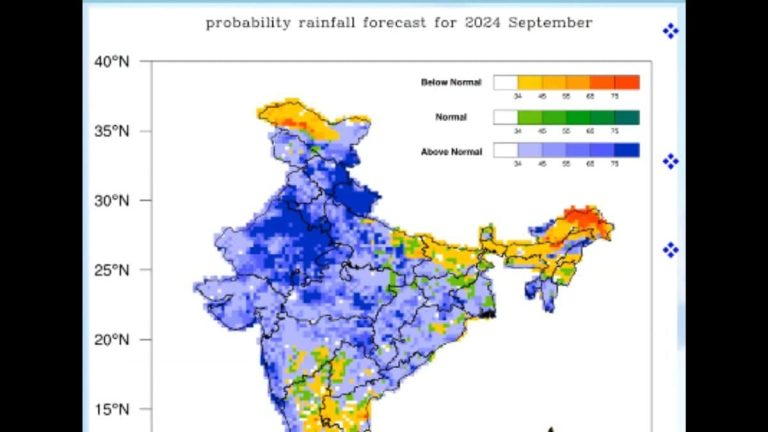
Jammu region and its surrounding areas are likely to receive a few spells of heavy rain over the next two weeks, but the upper reaches of the Kashmir Valley – which has already experienced a relatively dry season – may not be affected much. (International Institute for Management and Development in Lausanne)
Seasonal rains may not affect the voting process as polling will begin on September 18, when the monsoon begins preparing to retreat from the Himalayas
Monsoon rains, which have been absent for most of the four-month season, may finally arrive in Jammu and Kashmir. The meteorological department expects normal or above-normal rainfall in the Himalayas, but it is likely to remain less in the far north.
But the increase in seasonal rainfall this month may not affect the voting process, as voting will begin on September 18 – around the time when the monsoon usually starts preparing to recede.
Nearly a decade later, J&K is gearing up for high-stakes assembly elections – the first since Article 370 was abrogated and recognized as a Union Territory. The three-phase election will be held on September 18, September 25 and October 1, with the counting day being October 8.
According to the India Meteorological Department (IMD), areas where above-normal rainfall is expected are mainly in the adjoining districts of Himachal Pradesh. Therefore, Jammu region and its surrounding areas are likely to witness a few heavy spells of rain in the next two weeks, but the upper reaches of the Kashmir Valley – which has already experienced a relatively dry season – may not be affected much and rainfall is likely to be normal.
“Usually, Jammu and Kashmir receives deficient rainfall in September as the monsoon starts receding. But we expect 1-2 good spells in the next two weeks, especially in Jammu. However, there won't be much rainfall in the upper reaches of Kashmir. More rain. Overall, the monsoon rains are likely to end normally or slightly on the high side,” Mukhtar Ahmed, scientist at MeT Center in Srinagar, told News18.
The latest updates indicate that rainfall activity in Kashmir has intensified and is likely to continue this week, with further rainfall expected around September 6-7. However, the weather conditions before and after the polling day will become clear from the weekly weather forecast issued by the IMD ahead of the polling day.
Rainfall has been sparse this season, with the deficit touching -23%
The northernmost regions of the Himalayas have had a warmer year so far. According to IMD data, India's monthly average minimum temperature was nearly 0.61°C above normal, the highest temperature in the past 100 years. Monsoon rains have also continued for weeks after delayed and reduced winter snowfall. Drought persisted in July, causing temperatures to soar to 35°C for several days. Rainfall does not increase until around August. Overall, the rainfall deficit has reached -23%, with most parts of Kashmir from Anantnag, Kulgam to Srinagar facing rainfall deficit.
Severe rainfall deficiencies in the Himalayan region have had knock-on effects on local agricultural and horticultural crops, and drinking water supplies in many areas have also been affected. As of August 29, the monsoon deficit reached a staggering -85% in Shopian, -78% in Poonch, -72% in Kulgam and -38% in Srinagar.
Usually, the monsoon begins its retreat from Jammu and Kashmir between September 21 and 24. Over the years, however, scientists have seen a delay in its retreat. This month, DFID also forecast above-normal rainfall last month, suggesting the retreat of the monsoon may be further delayed.
“Over the years, we have witnessed delayed retreat of the monsoon, especially in northwest India. This season too, we are expecting heavy rains in Gujarat and Rajasthan around September 15, so there may be a delay, but it is difficult to get it a few days ahead. Weekly forecast.
